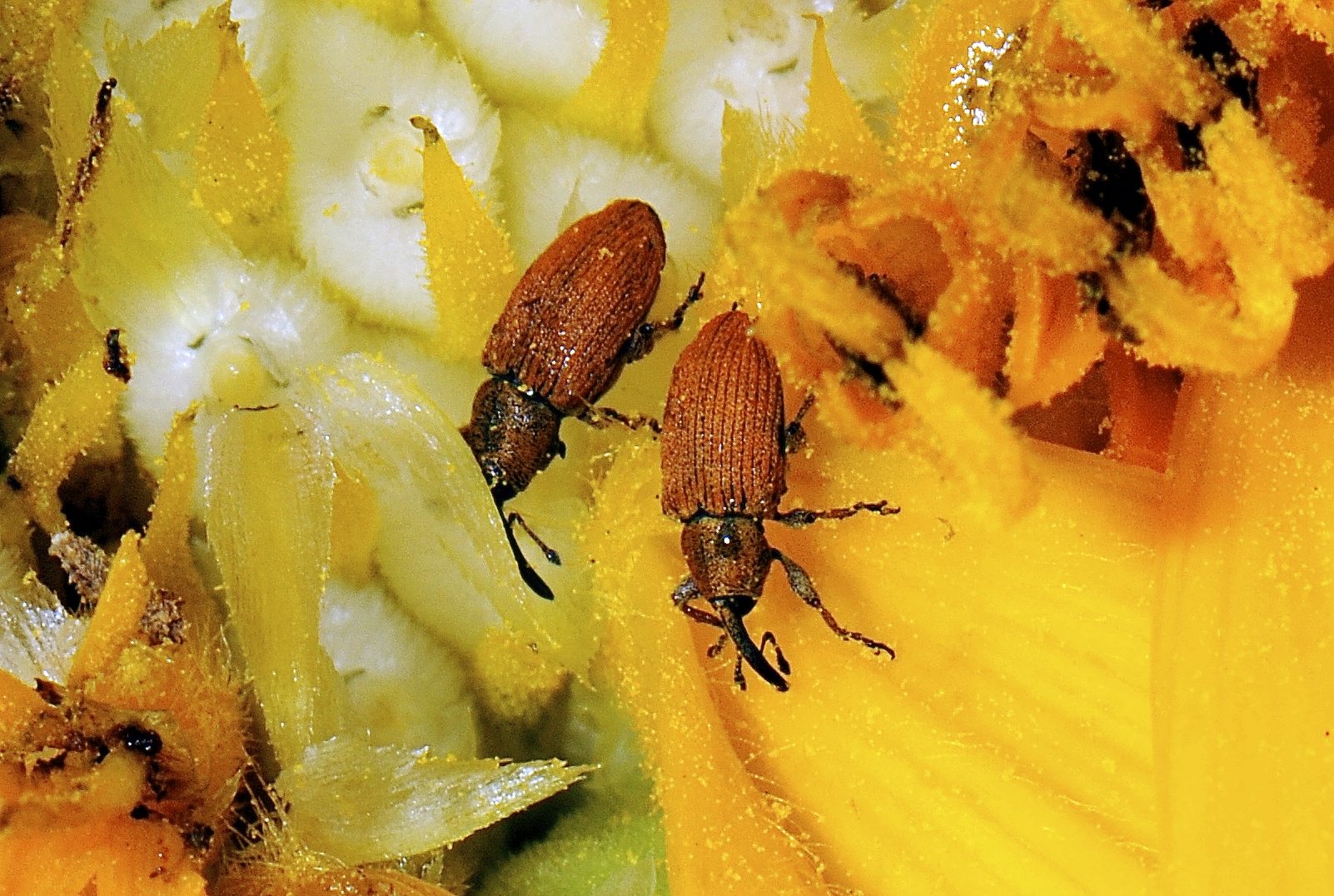Article Archives
Tackling the Red Sunflower Seed Weevil
Wednesday, March 30, 2022
filed under: Insects
 Photo credit: Patrick Beauzay, NDSU
When it comes to insects, there are plenty for sunflower producers to watch for during the growing season. From banded sunflower moth to cutworms, wireworms and seed weevils, there’s always something to be scouting for. Of particular concern these days,are red seed weevils.
Photo credit: Patrick Beauzay, NDSU
When it comes to insects, there are plenty for sunflower producers to watch for during the growing season. From banded sunflower moth to cutworms, wireworms and seed weevils, there’s always something to be scouting for. Of particular concern these days,are red seed weevils.
“The 2021 NSA crop survey and other recent (2017, 2019) surveys show some growers are experiencing severe damage from red sunflower seed weevils. It is the number one seed feeding pest in North and South Dakota,” explains Jarrad Prasifka, USDA-ARS Fargo-based research entomologist. “It’s also worth noting that not far from fields that have had severe damage are ones with very little or no seed weevil damage.”
Prasifka says that’s a pattern he’s seen repeated over the last three NSA surveys, which leads him to believe that some growers are managing this insect more successfully than others. However, reasons for this field-to-field variation are not clearly understood.
Red seed weevils are native to the United States and are the most common damaging insect on flowering sunflower. Janet Knodel, North Dakota State University Extension entomologist states that, “They usually emerge in early July. Weevils feed on the pollen from flowering sunflower for several days, then lay eggs in the developing seeds. The eggs hatch and the larvae consume part of the developing kernel.”
The red seed weevil female lays eggs in as many as 27 seeds. Damaged confection seeds are discounted; test weights and yields are also generally lowered in oil-type sunflower infested with red seed weevil.
“Red seed weevils are a major issue in confection sunflower,” points out Adam Varenhorst, extension field crop entomologist at South Dakota State University. “The real kicker, I think, with these pests is they’re not even eating the entire developing seed. They’re a very wasteful insect: they feed on a partial part of that seed. A lot of times they’ll eat half of a seed and then drop into the soil at the end of the season.”
Varenhorst says the recommended treatment threshold in South Dakota is four to six weevils per head. In recent years, he’s seen outbreaks that are 10 to 100 times over that threshold.
“That translates into 40 to 600 weevils on a single head,” he says. And that, he underscores, is a real problem. Researchers at South Dakota State University have been collaborating with North Dakota State University to collect data, compare populations and, hopefully, find some answers for producers.
“Producers who have grown sunflower know weevils are a problem,” Varenhorst observes. “You’re probably spraying at least once a year, sometimes twice.”
Prasifka says producers need to do more than just spray.
“Growers need to consider using every tool possible to manage weevils,” the USDA entomologist emphasizes. “This can include early planting and other measures. But at a minimum, if you plant sunflower, you have to commit to scouting or paying someone to scout your crop and apply an insecticide if you exceed the economic threshold.”
Economic thresholds change with crop price. NDSU provides updated thresholds growers can use to make decisions on spraying.
Prasifka stresses the importance of managing weevils. “Seed weevils like sunflower. They generally will not feed and reproduce on other types of plants, so anyone who does not manage this pest in their fields is likely not just growing sunflower, but [also] ‘growing’ seed weevils that will infest their crops and their neighbors’ crops in the next year.”
While researchers continue studying the insects and the efficacy of products, Varenhorst says researchers in North and South Dakota plan to add other products that are currently not labeled for sunflower into trials.
“There are other products used to manage weevils in other crops that should be similar enough in sunflower. We want to test those and see if they work,” the SDSU entomologist explains. “We are also probably going to need some emergency registrations for alternative products.” — Jody Kerzman